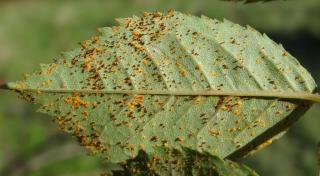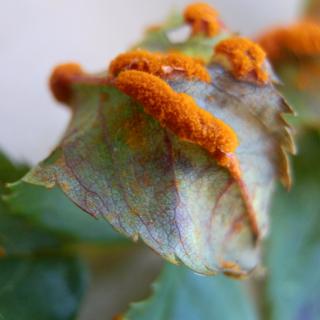

Even though the number of fungal diseases called “rust” is very high, they almost always share the same symptom: brown-orange blisters appear on the underside of leaves with yellow stains on the topside.
Here is the right treatment for this disease.
This disease most often appears during moist weather or excessive watering on leaves.
Wind can spread it to other plants in the garden.
From the beginning of spring till the end of summer.

Rose trees are very often contaminated with rust, but many flowers, fruit trees, trees, shrubs and vegetables can be impacted as well.

In the very worst case, all the leaves are lost.
What is especially problematic is contagion, the spread of the disease to other leaves on other plants.
It results in rose shrubs not looking very nice in August.
Although there are many different types of rust, the once most commonly encountered has the latin name Phragmidium mucronatum.
Effective treatment products are often sold under the label “rose tree disease” and can be used to treat other plants as well.
Here are a few natural fungicides made from fermented tea, they’re easy to make yourself:
Credits for images shared to Nature & Garden (all edits by Gaspard Lorthiois):
Rust on rose tree leaves by Jerzy Opiola under © CC BY-SA 4.0
Orange spots under rose tree leaf by Jerzy Opiola under © CC BY-SA 4.0
Orange powder puff on rose leaf by Teresa Clements ★ under © CC BY-SA 3.0